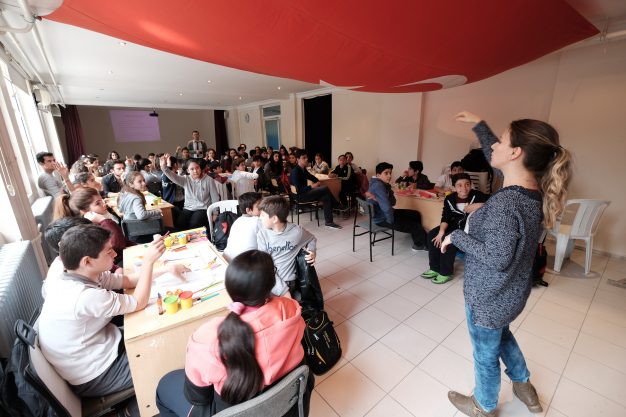
How to teach architecture to children
What are the important elements of successful architecture teaching for children? This is clearly an important question for teachers planning any kind of academic workshops in architecture for children. Recent studies In Turkey, have shown that there is an increase in the extent to which university architecture faculties are organising this kind of activity and, whilst there is no doubting their good intentions, there are questions about the degree of awareness about the educational challenges and implications for children.
For example, there is sometimes a lack of learning and teaching strategies, including the absence of a clear educational purpose to inform the instruction being offered. Another issue is around the methods used, which are of course very important to achieving the purposes of any study. Finally, there is commonly a lack of understanding of age-appropriate techniques.
Child-friendly education
The reason for the lack of awareness of these issues may be the approach of the architect, who will sometimes assume that knowing architecture means he/she can teach it to anyone. This is a dangerous assumption, because the learner is not an architecture student. It mustn’t be forgotten that, he/she is a child.
So with this awareness and with the guidance of experts from educational sciences, a series of architecture studies for children were organised for the 2015-2016 semester in İzmir by Burcu Gülay Taşçı. In doing so, she followed these steps:
- Permissions were obtained from the Directorate of National Education in İzmir Turkey
- Research Ethics Committee Approval was provided
- Workshop coordinators met with schools directors to inform them about the workshop plans
- The workshops were begun and carried out according to the lesson plans
Children-Architecture Workshops from Turkey
As illustrated above, the process is not independent from the schools and their programmes. The contents of the workshops have to be checked by the Directorate of National Education. The process should be designed with architects, school managers, teachers and students. Finally, all these preliminary preparations should be controlled by experts from the educational sciences.
It is positive that there is increasing interest among Turkish children, in learning about architecture, but delivering such studies in a purely thematic fashion leaves them disconnected from the rest of the child’s formal education and diminishes student participation. Rather, these studies should be interdisciplinary, organised in an integrative, holistic fashion. After all, children are the architects of the future…
Author: Architect Dr Burcu GÜLAY TAŞÇI
Photo credit: Workshops designer and coordinator, Architect Dr Burcu GÜLAY TAŞÇI (2016)




